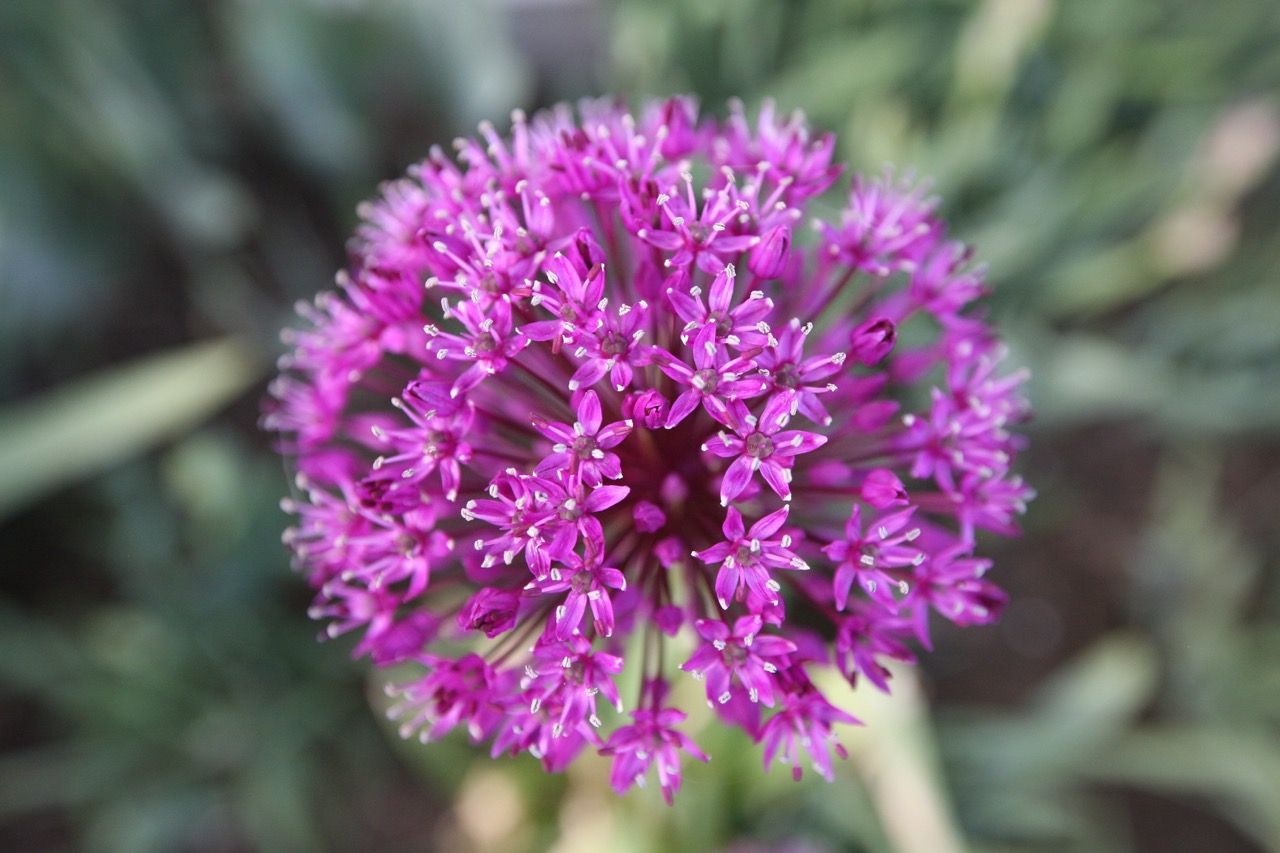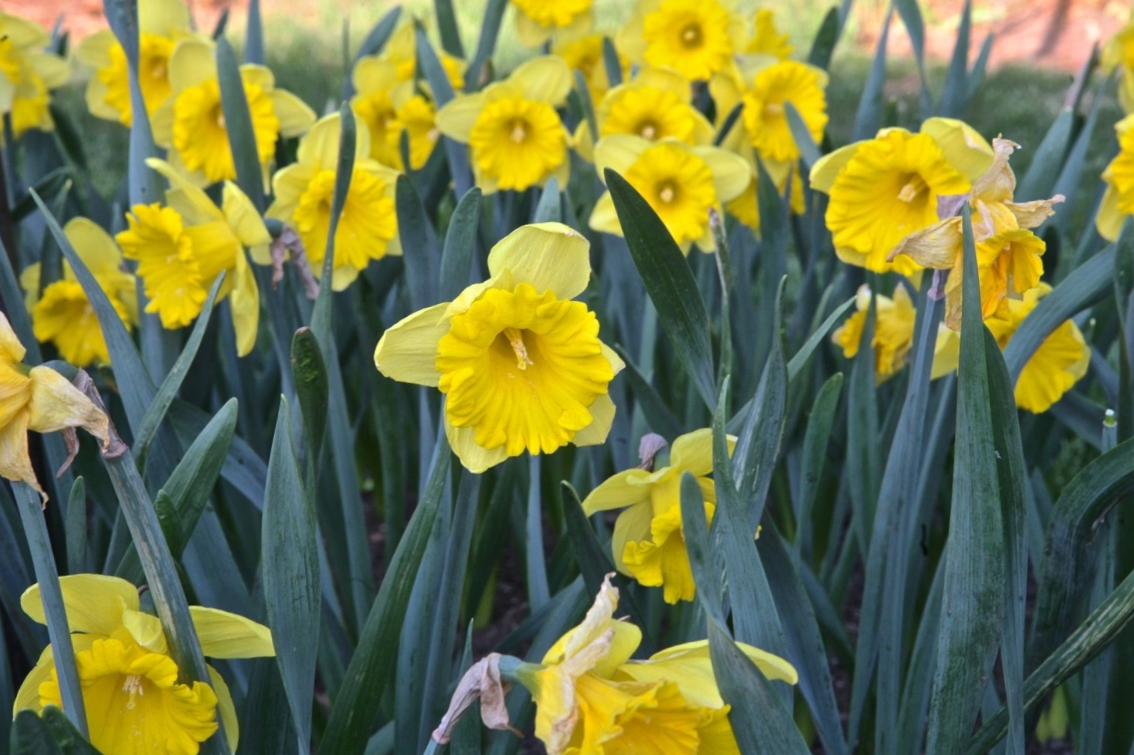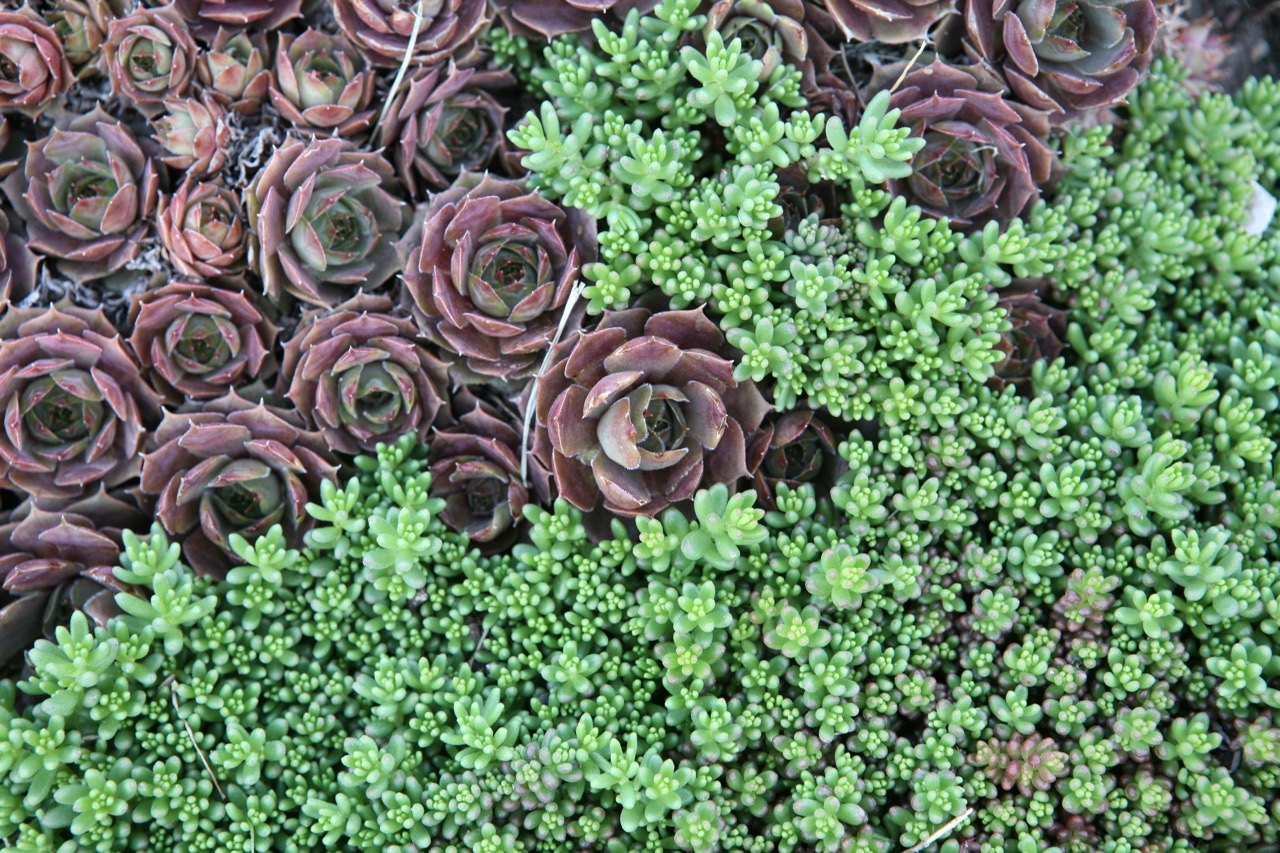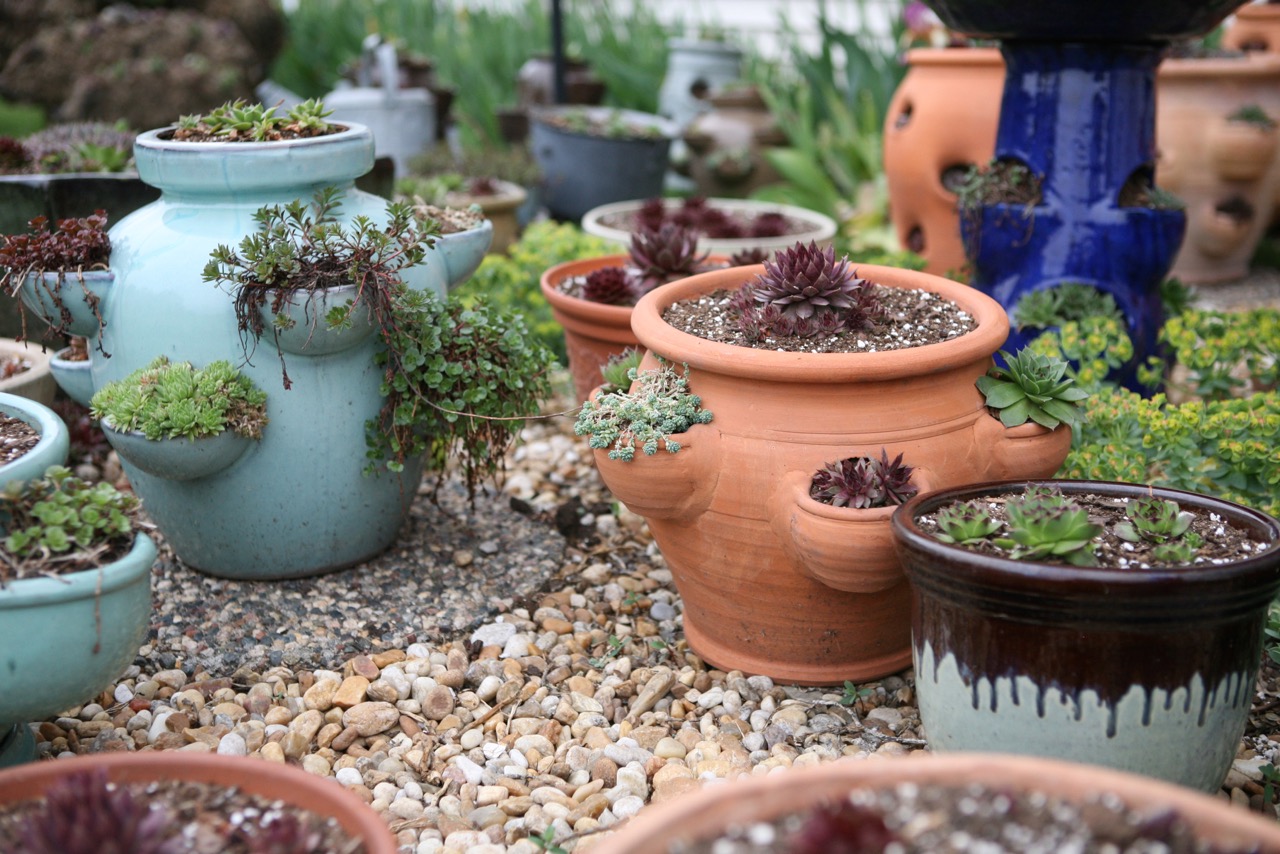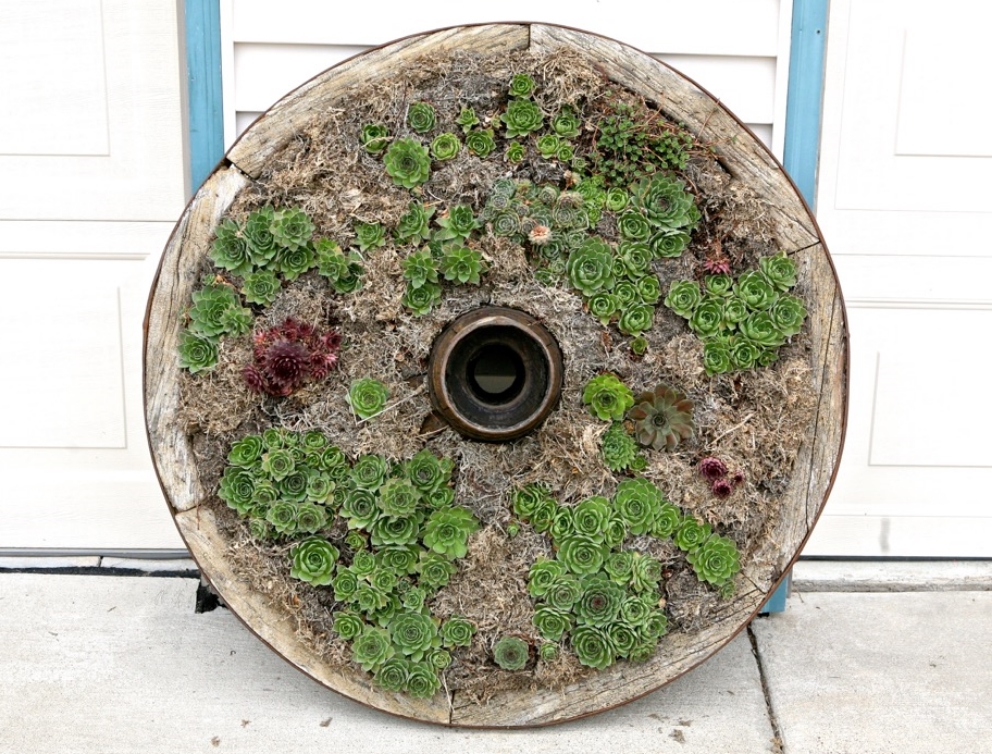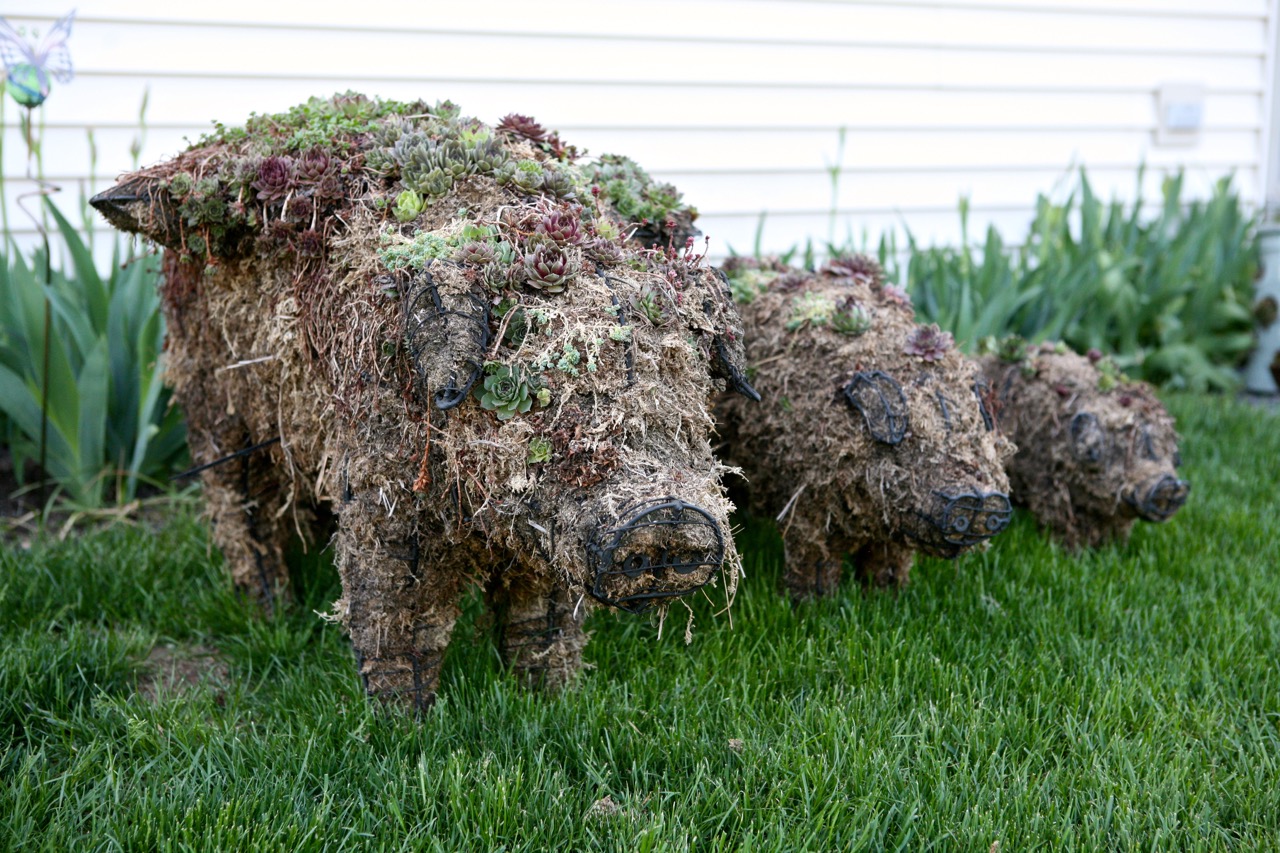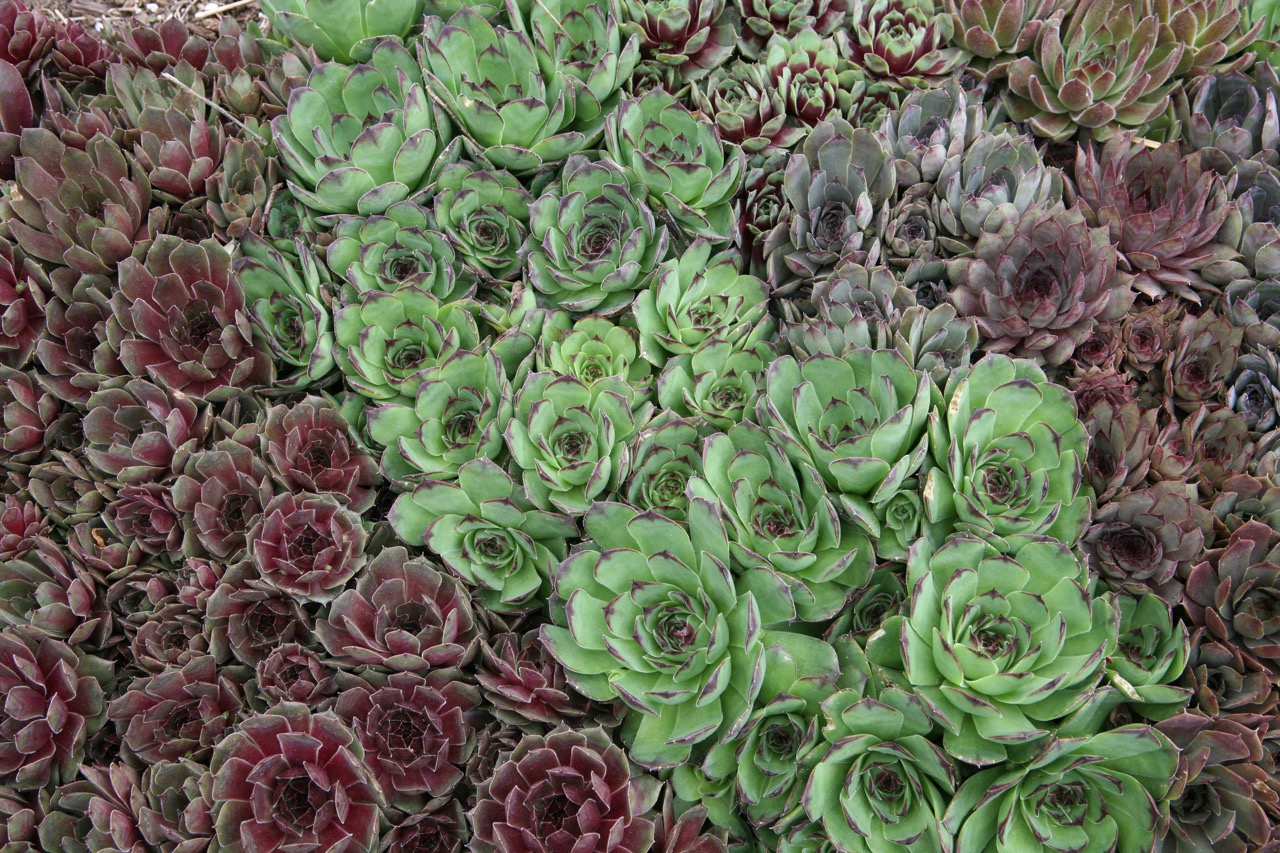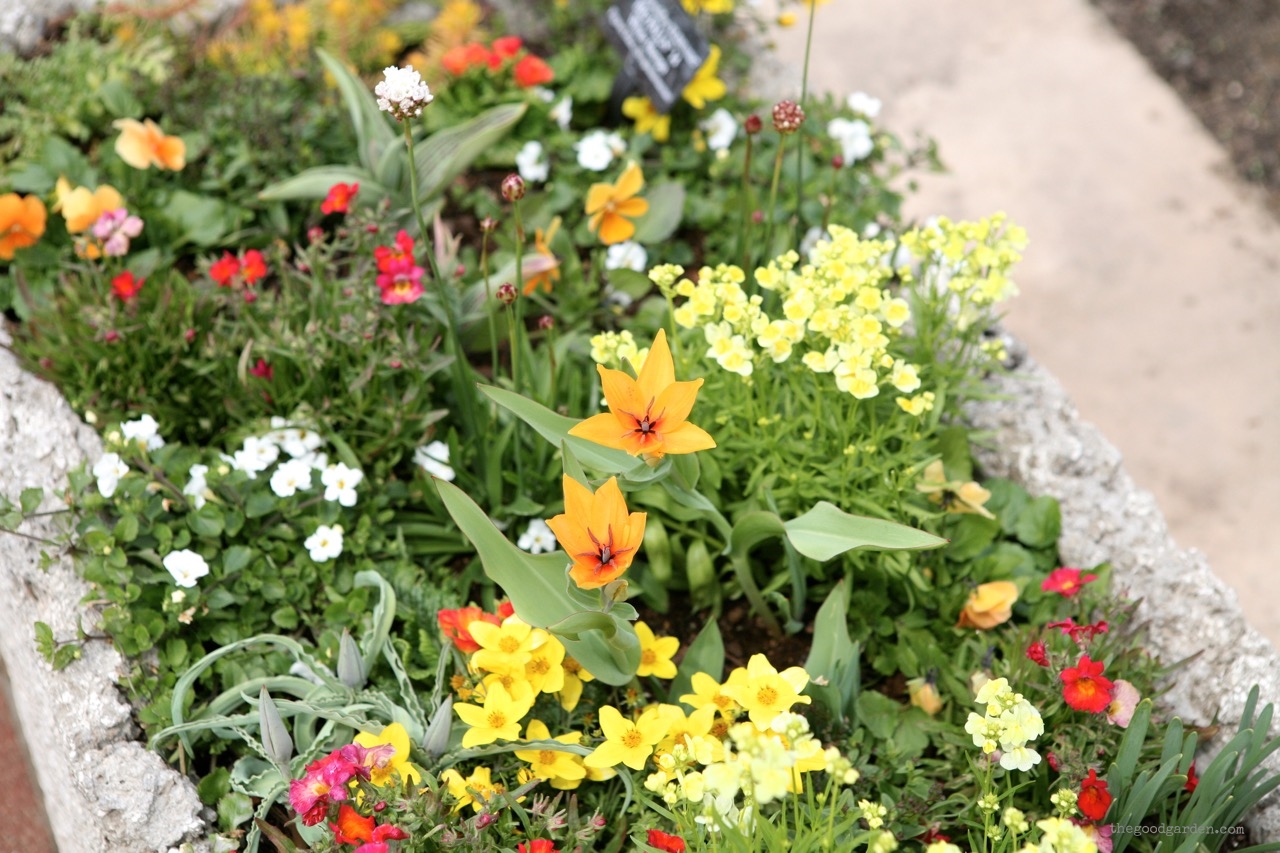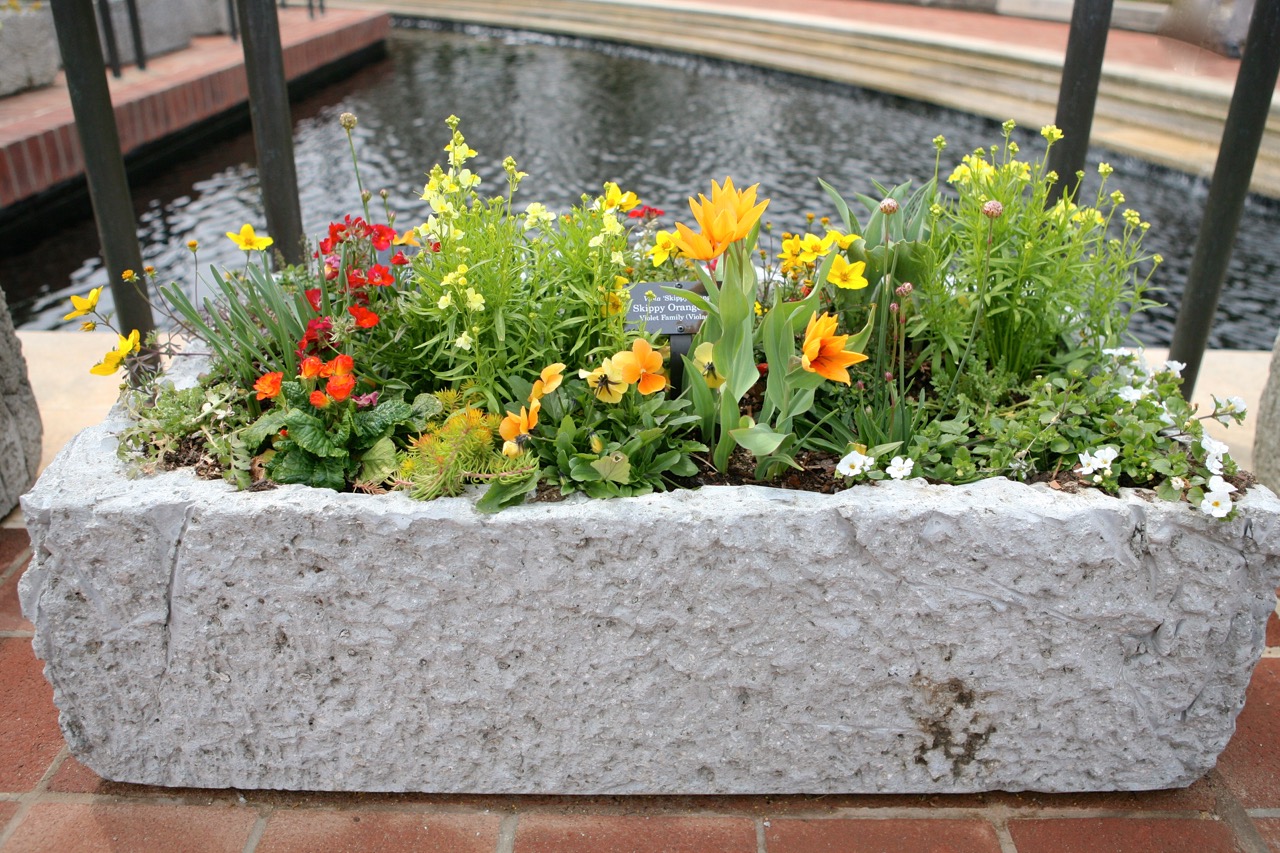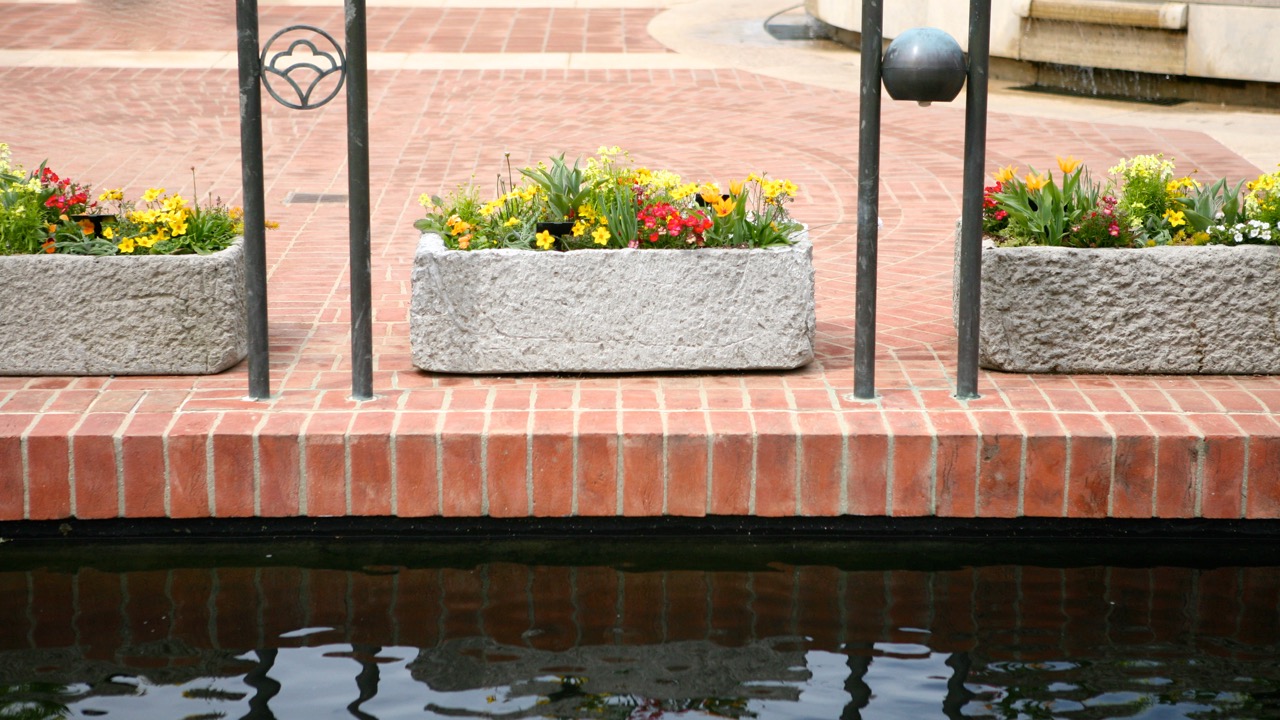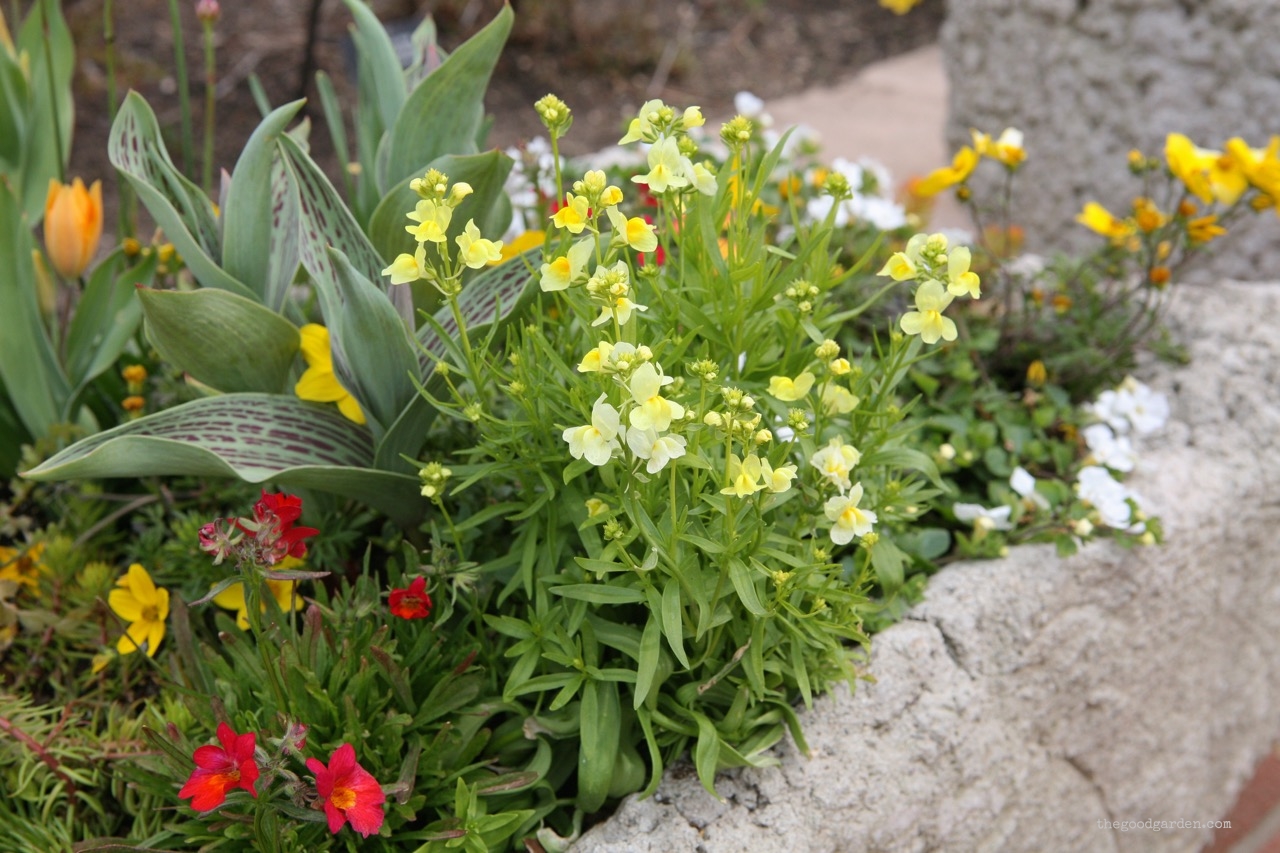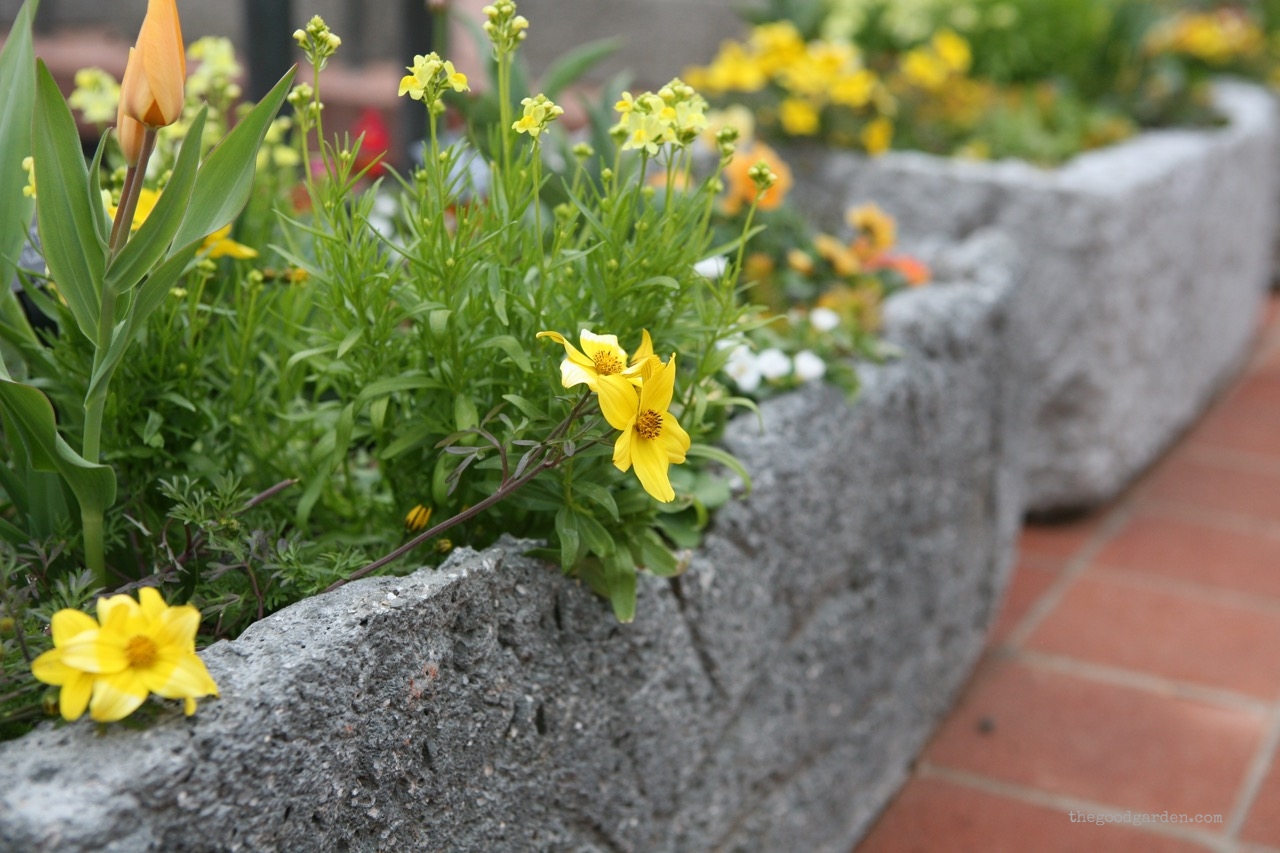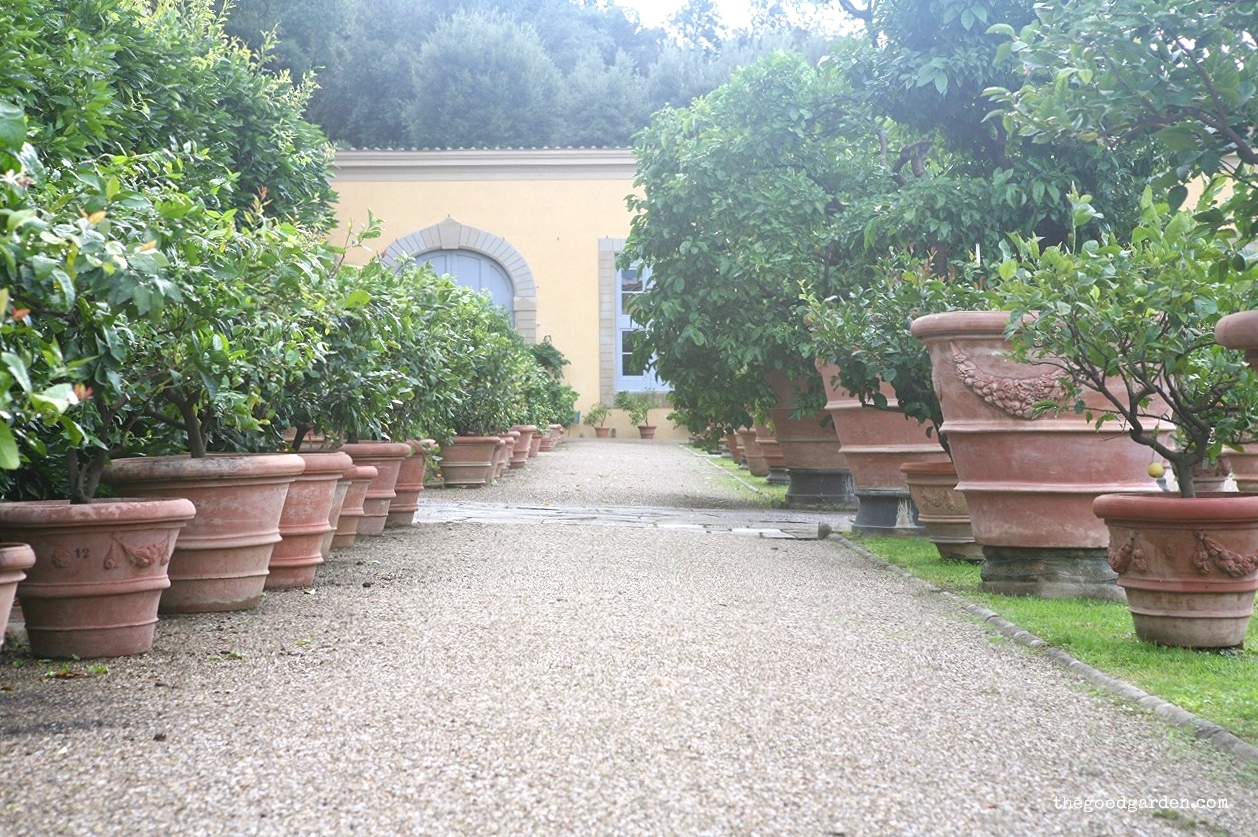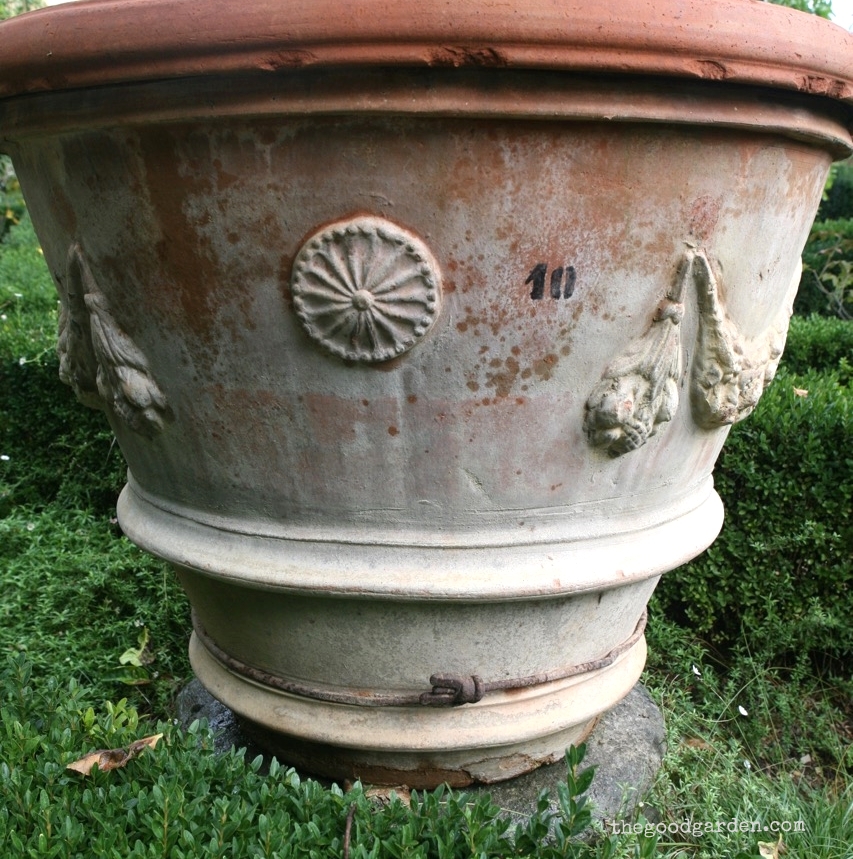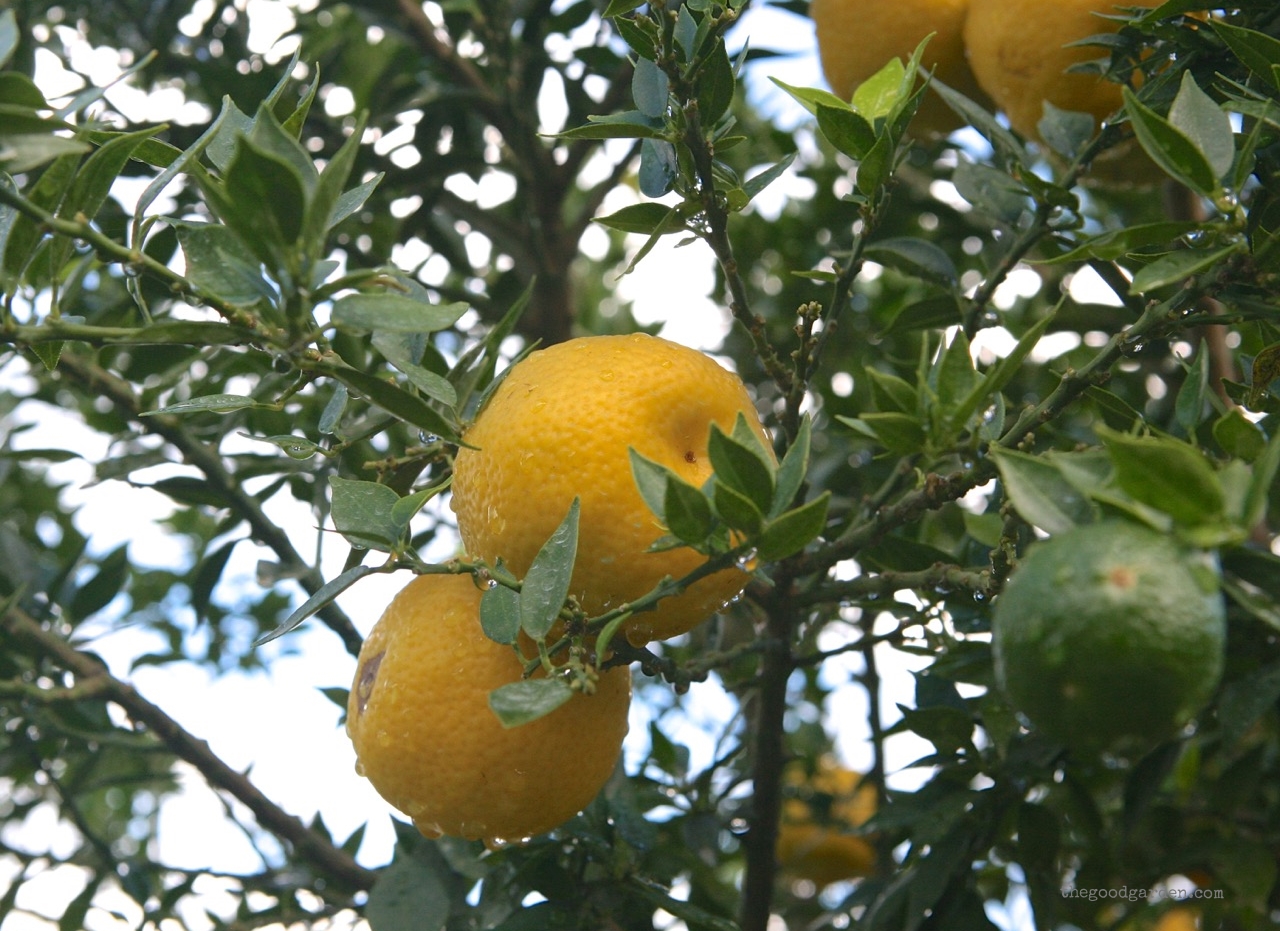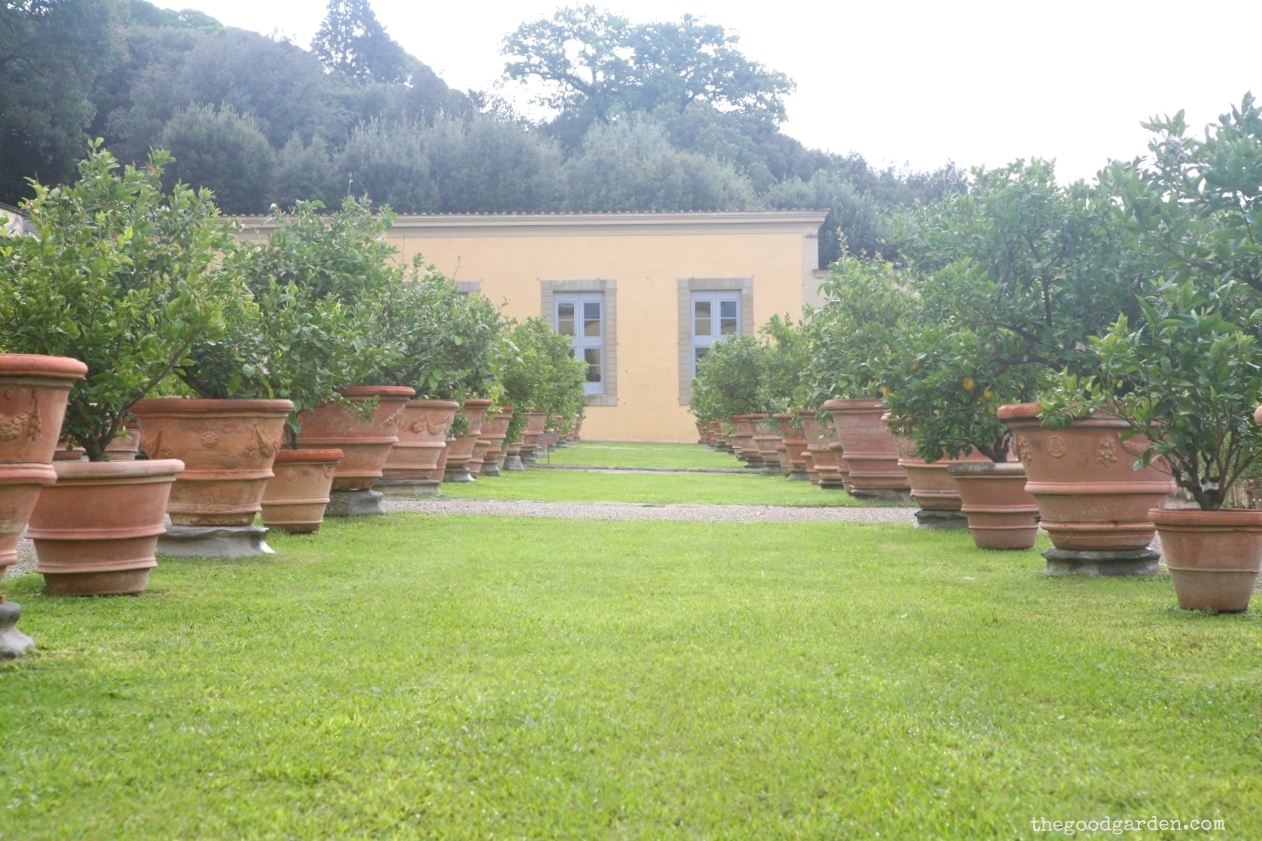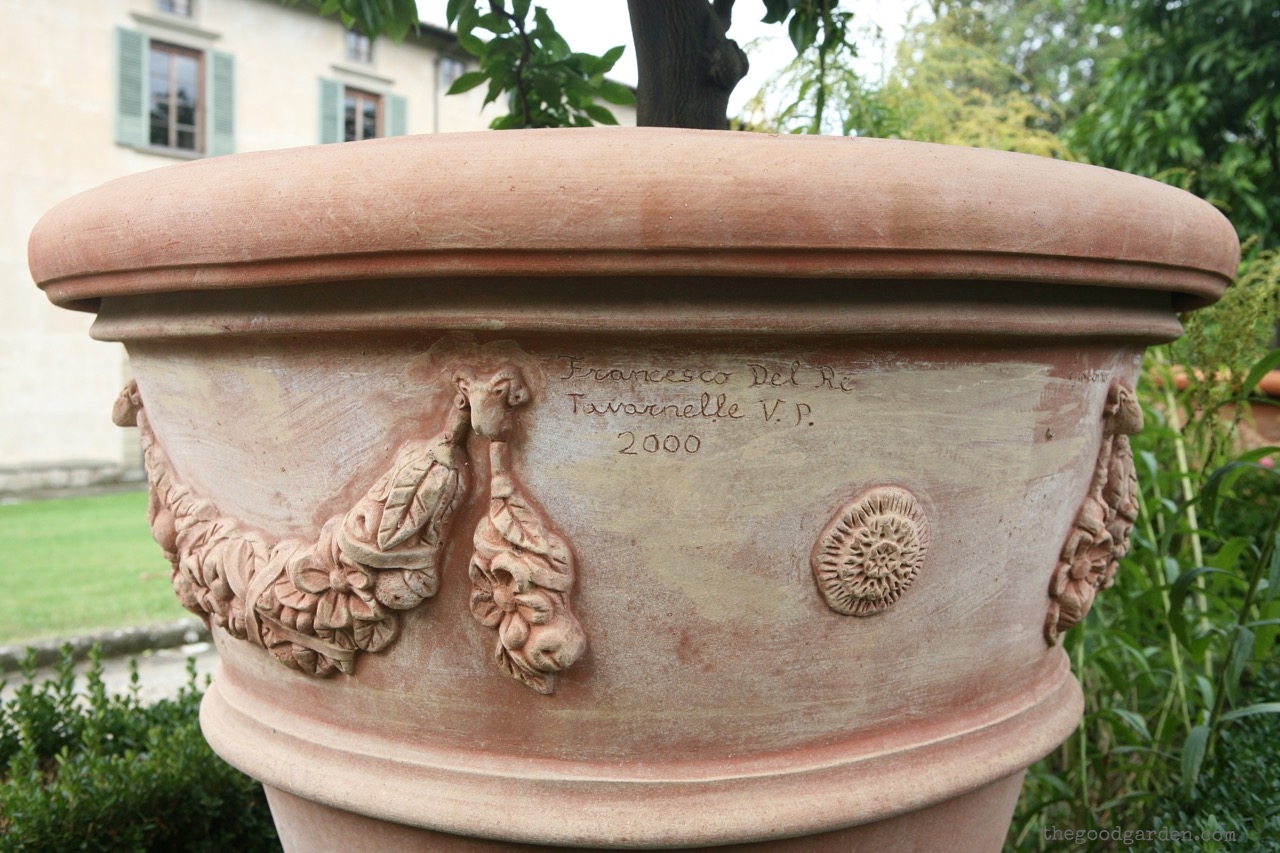I recently took break from garden history to get inspiration from local gardeners Nate and Roberta Selle who have taken a bold design approach to create a welcoming garden. Both fell in love with gardening when they were young. While their first gardens consisted mostly of vegetables, their current Wisconsin garden is packed with flowers, color and fragrance. “The passion is in the flowers, in working with the beauty,” explains Nate, and Roberta adds, “I love the fragrance. The garden brings a simile to my face every time I am in it.” Speaking with Nate and Roberta about their garden reminds me of the power of memory, the joy of sharing, and the importance of personality in garden design.
Bird bath/ planter for succulents overlooks the layout of the rear garden beds.
Nate can visualize design ideas in his head; he’s ready to implement them right away. Roberta likes to draw things out, to consider before moving ahead. These different approaches to the garden complement each other. Their property was originally dominated by lawn. Over the course of six years, they converted section after section into plant beds so that today it is a garden first, with grass pathways providing a way to get around. “We started with the south side of the house where we could put just about anything in. We loved it so much that we slowly expanded the garden around the house.” One of the most striking features is a 20-foot by 50-foot garden in the middle of the back yard - no easy feat since the house lies on the Niagara escarpment. Nate dug out three tons of rocks by hand to make room for fresh, rich soil.
The couple actively seeks inspiration from other gardeners: “we are often driving around and Nate will say ‘go slow here’ to point something out.” They are not shy about building on what they see, making changes that let their personalities shine. This makes their garden delightful and unique. In terms of plant selection, they’ve got over a hundred varieties, but their favorite plants - daffodils, tulips, and irises in yellow, orange, and purple – play starring roles. And their love for succulents comes through. Hen and chicks are paired beautifully with creeping sedum: as ground cover, in a collection of strawberry planters, and in several giant wire pigs.
The Selle’s personalities extend into the details of the garden. Nate’s childhood hobby of collecting pigs, a good luck symbol across cultures, has spilled into the garden with several pig sculptures. And during their garden party last year, Roberta planted teacups with succulents and gave them away as party favors.
From the beginning, family and friends have been important to the garden. The first plants used came in a car “filled to the trunk” from Roberta’s uncle in Pennsylvania. The fact that these plants were shared from his garden make them even more meaningful. When Roberta’s 39-year-old cousin passed away, they planted a special container filled with yellow begonias to remember her by. Roberta explains what happened next, ”We then started to invite people to do something special for a loved one, or we’d put in a friend’s favorite flower. An angel and smiley face are for our neighbor and daughter, both breast cancer survivors.“ These last two are right next to each other in a field of irises, their favorite flower. This element of Nate and Roberta’s garden give it depth, and reminded me of the power of using the garden to remember loved ones by.
When asked for gardening advice, they quickly respond, “know your sun and soil and match plants to that. Start small and be realistic with how much time you want to spend. Not everyone is going to like spending 20 hours a week in the garden like we do.” Nate also insists: “Figure out what plants you like, what makes you happy.” And Roberta advises patience, “Give your plants 3 years. If they don’t work by then, move them somewhere else.”
The most amazing thing about Nate and Roberta’s garden is how welcoming it is. No fences or hedges block it off from the neighborhood. They weren’t home when I first visited, but the layout made me feel comfortable wandering around. Before I knew it I made myself right at home, sitting on one of several benches, just enjoying the space. Roberta and Nate say that this design feature is intentional: “The flowers are too pretty not to share. We love to have people come in. Why have a garden if you are going to close it in. It’s not what they are made for.”
Happy gardening!
A group of red and white striped tulips remind me of the famous ‘Semper Augustus’ variety. In the 1600’s these were so rare that it was cheaper to commission a grand master painting of this tulip than to own one.
The iris, named after the Greek goddess who traveled on rainbows to link heaven and earth, plays a key role in the garden. They are planted in drifts to increase their impact.
Shade-loving plants like trillium and ostrich fern fill the shady border on the north side of the house.
See this post as featured in the Post-Crescent.

